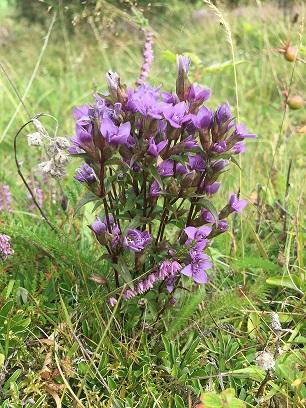Local and regional factors correlating with long term population change in Gentianella campestris

Here you will find further information about my master thesis Local and regional factors correlating with long term population change in Gentianella campestris. In the menu to the left you can also find a copy of the poster I made for the presentation of my thesis.
Abstract
The decrease of semi-natural grasslands in Europe during the last decade has made several previously common species rare or declining in numbers. One of these species is the endangered field gentian Gentianella campestris, which has been proposed as an important indicator species for semi-natural grasslands. Previous studies have highlighted the importance of consistent management and shown how local conditions affect the species. Less is known about how the population is affected by isolation and changes in the surrounding landscape, both of which are potential consequences of habitat loss.This study utilized long term citizen science data on the population changes to explore if local and regional factors, such as connectivity could explain the rapid decline and local extinctions that the field gentian population in Östergötland, Sweden, has experienced since the beginning of the 1990’s. Generalized linear models showed that the declining field gentian population can partly be explained by changes in the surrounding landscape which has led to decreased connectivity of semi-natural grasslands. The study also indicate that there is a need for future management plans to consider the surrounding landscape on a distance of 1-3 km from field gentian localities as this scale seems to be the most important.
Full text version available here
Responsible for this page:
Director of undergraduate studies Biology
Last updated:
06/27/18
